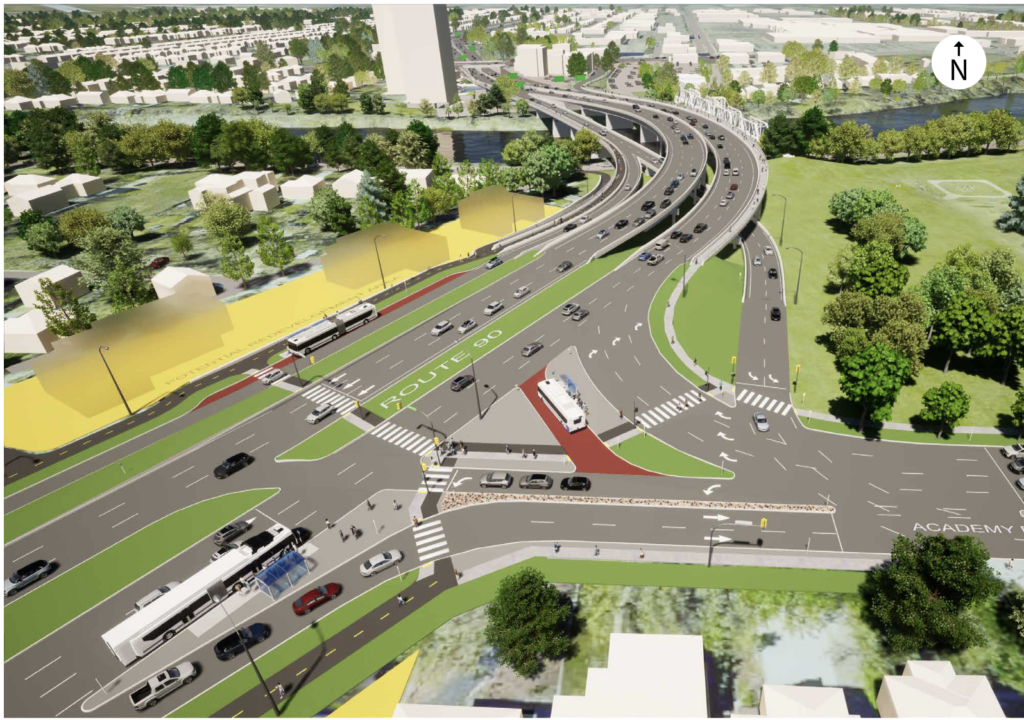Mayor Gillingham wants to spend $1,000,000,000 “improving” Winnipeg’s Route 90 (aka Kenaston Blvd) between Taylor and Ness avenues.
The proposal can be read here (PDF, it’s large).
“Improvement” seems to be defined as: a reduction of projected 2041 travel times (by car) by 90 seconds (page 7).
It should also be noted that the goal travel time is of 9.2 minutes is actually 72 seconds slower than the current travel time of 8 minutes. Travel times increase regardless of the capital expended on adding one more lane because induced demand is in fact real. And the proposal does seem to implicitly acknowledge this.
Or…
To put it another way, the Mayor is proposing to spend
$11,111,111 per second
…of travel time reduction. I have to question whether this is a good use of money.
But nevermind that, let’s talk about safety.
Safety
The City of Winnipeg has adopted a Strategic Road Safety Action Plan with the (very feeble but very achievable) goal of “…of a 20 percent reduction in fatal and serious injury collisions.” So I was wondering how the Route 90 expansion might fit into this.
The fine people over at MPI provided me with 10 years of collision data for Kenaston Boulevard for the proposed “improvement” area. Keep in mind that these are only incidents that generated a report to MPI, it’s safe to assume that this are all “serious.”
Over the past 10 years, 10 pedestrians have been injured in this “improvement” zone. Or roughly 1 in every 108 vehicle collision involves a pedestrian injury.
I cannot see how adding two lanes (a 50% increase) and increasing the speed limit from 50km/h to 60km/h is going to help bring those 10 pedestrian injuries closer to zero!

The pedestrians crossings at grade throughout this proposal simply are not going to be good enough! If we’re spending $11M dollars per second of car quality of life, surely we can spend a few million dollars to allow pedestrians to cross this pseudo-freeway safely!
Let’s save some money and turn Route 90 into a park!
Public Engagement
At the time writing the city is requesting public engagement. Please take some time to complete the survey available here.
The Data
For those interested, the raw data from MPI can be found here:
Correction
Brent Bellamy suggests that the cost for this project is only a mere $715,000,000. Which brings the per second improvement cost to $7,944,444 🤷♂️
